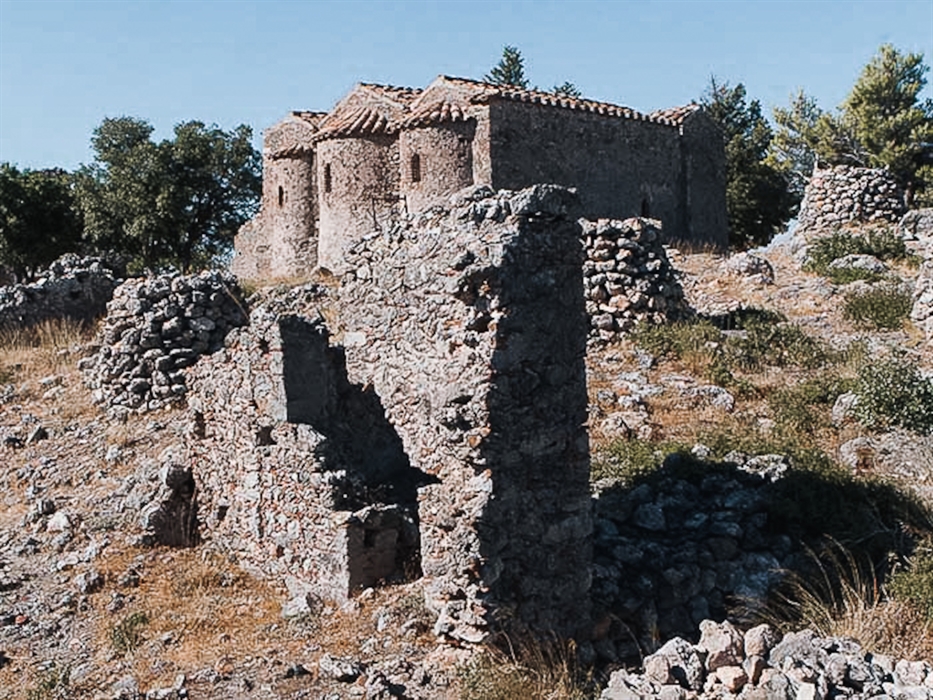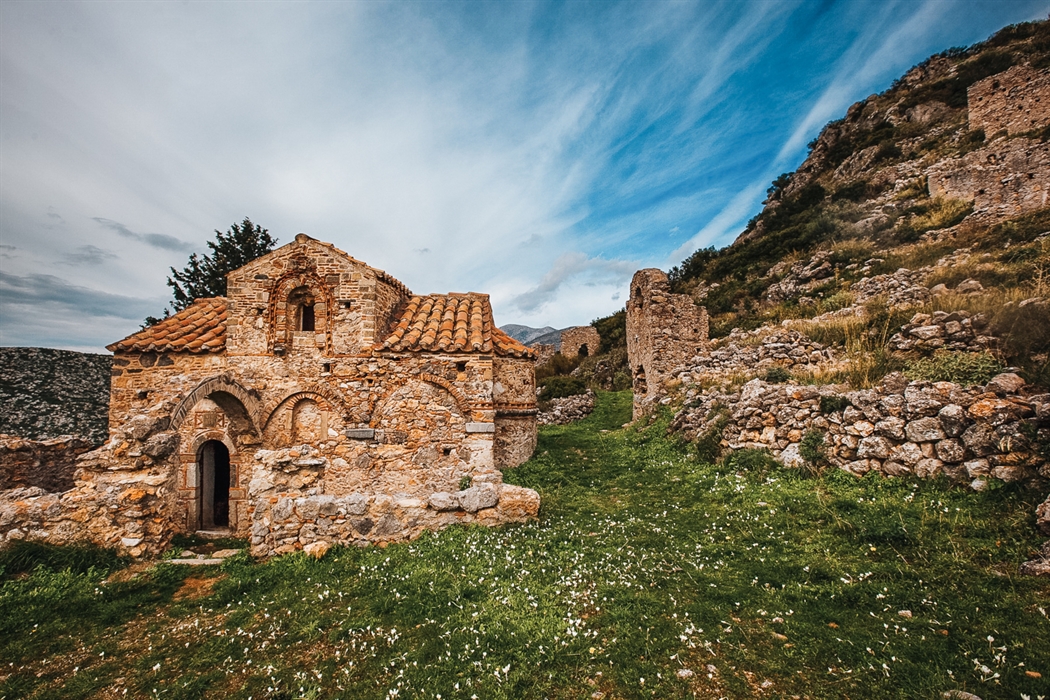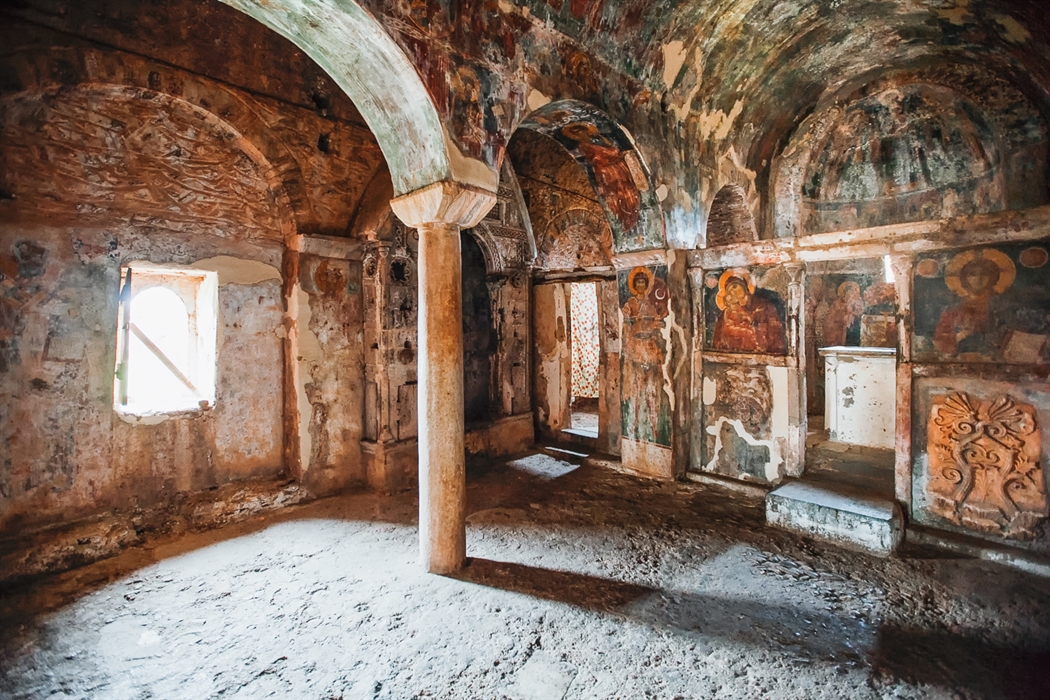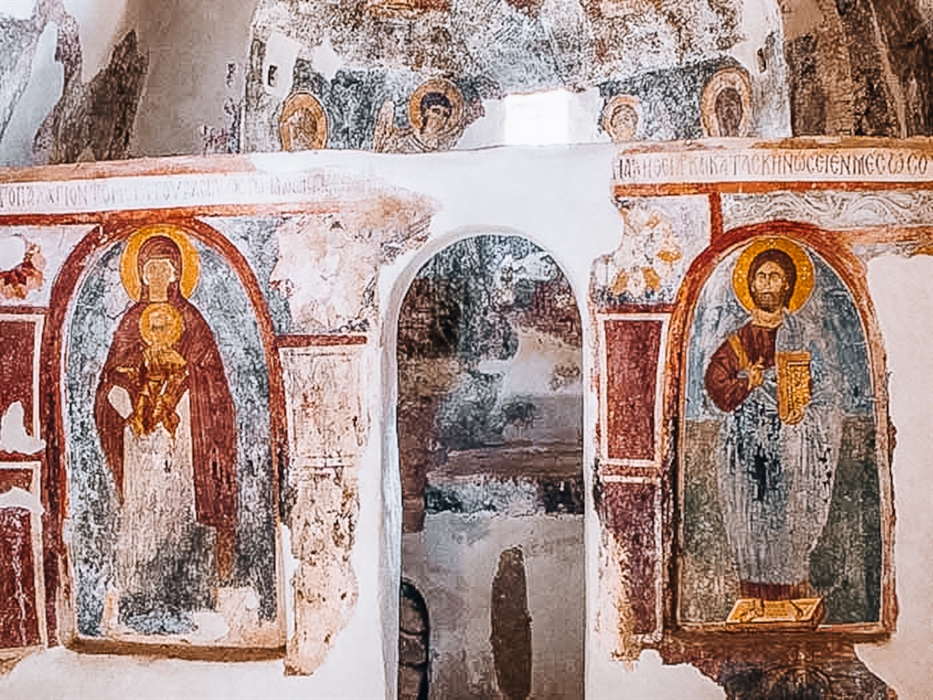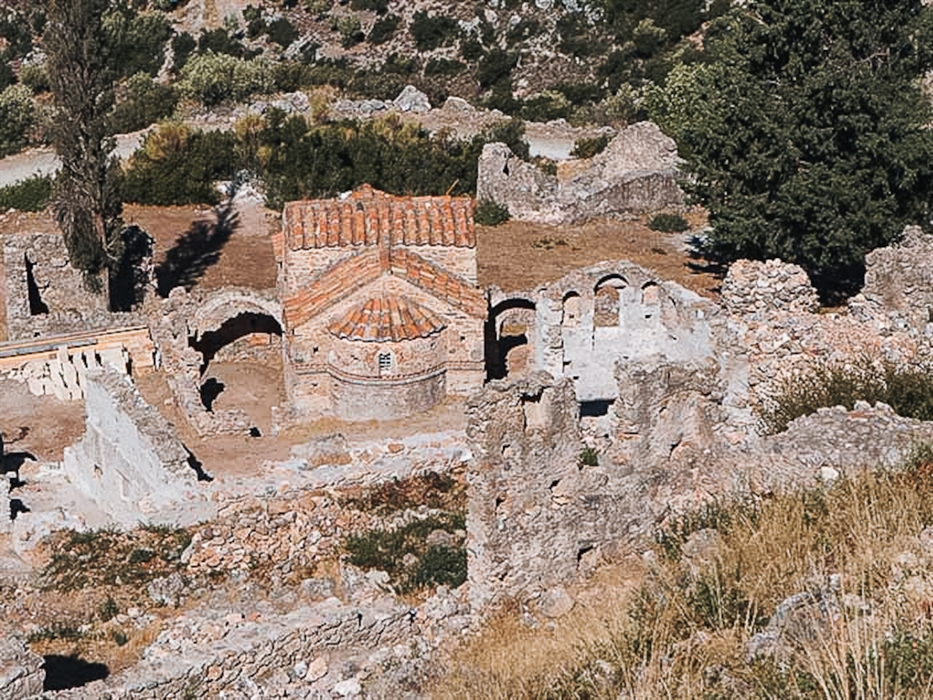Geraki castle
From afar, this castle will remind you of Mystras. Geraki castle was built near to Geraki, the main village in the area, during Frankish rule in the middle of the 13th century. It includes important religious monuments where you can see sections of frescoes dating back to the 12th - 15th centuries. Its position on Palaiokastro hill means you’ll get panoramic views of the surrounding mountains.
From afar, this castle will remind you of Mystras. Geraki castle was built near to Geraki, the main village in the area, during Frankish rule in the middle of the 13th century. The castle includes important religious monuments where you can see sections of frescoes dating back to the 12th - 15th centuries. Its position on Palaiokastro hill means you’ll get panoramic views of the surrounding mountains.
The castle’s architecture is similar to that of other mountain castles in the Peloponnese. It has an irregular shape (almost quadrilateral) and large corner towers. The castle walls were built by the Franks and repaired or reconstructed by the Byzantines, and now shelter ruined buildings, two large cisterns and the church of Agios Georgios. The church is a three-aisled basilica with a narthex and has Byzantine style frescos which date from the end of the 13th - beginning of the 14th century and a shrine decorated with Frankish details.
In the area, there are other churches from the late Byzantine period with impressive architecture and interesting frescoes. If you visit Geraki you will see other important churches in and around the village.
There are information boards at the site which tell you about the history of each monument.
THE HISTORY OF THE CASTLE
Geraki was the seat of one of the 12 baronies of the Peloponnese that made up the Principality of Achaia and was ruled by the Frankish Baron, Guy de Nivelet. According to the Chronicle of Morea, he or his son Ioannis built the castle so they could control the Elos plain. As was often the case in mountain castles in the Peloponnese, the Franks took advantage of the natural fortification and must have installed a watchtower at the top of the hill so that they could communicate with the castles at Mystras and Monemvasia and with the coastal heights of the Elos area.
The fortress remained in the hands of the Franks for 50 years, but in 1262 they handed it over to the Byzantines together with the castles at Monemvasia, Mystras and Mani. These castles were the ransom the Franks paid for the release of William Villeardouinos and the other barons and knights who had been captured by the Byzantines in 1259.
In 1453 the glory days of the Byzantine state came to an end and in 1460 the Peloponnese fell into the hands of the Turks. This was also the end of the castle state at Geraki.
As with the other Byzantine territories in the Peloponnese, it was passed from Venetian to Turkish rule several times before finally being abandoned. In 1700, the inhabitants of the castle moved permanently to the village on the plain which became the capital of the Venetian-occupied area and then the Turkish-occupied area.
CHURCHES
- Agia Paraskevi, cross-roof type, late Byzantine. Frescos from the first half of the 15th century.
- Single-aisle church of Zoodochos Pigi, sections of frescos from 1431.
- Churches outside the walls: Profiti Elias with frescoes from the 15th century, Theophanon with 13th century frescoes, and Taxiarchon with 15th century frescoes.
Did you know that
Tel. 27310 25363
Opening hours: Monday-Friday: 08.30-15.30.
Location
Find the destination on the interactive map below.
Categories
Weather
Σχετικό περιεχόμενο χρηστών (UGC)
Ενημερωθείτε για ενδιαφέροντα θέματα γύρω από τον προορισμό μέσα από το περιεχόμενο των χρηστών μας
Discover 7 hidden gems of the Peloponnese
Many of you may have already visited some of the most renowned attractions…
TOP 10 archaeological museums in the Peloponnese
Olympia, Mycenae, Epidaurus, Diros Cave, Ancient Corinth, Messene and…
TOP 10 Castles in the Peloponnese
Castles galore! Mystras, Monemvasia, Palamidi, Methoni, Koroni,…
Newsletters
- About us
- FAQ's
- Map
- Tourism information centers
- Disclaimer
- Sitemap
- Our brand
- Media roum
- Adding your bussiness
- Corporate
- MICE

Peloponnese. Greece beyond the obvious





Design and creation from Cosmote
Marinas and Moorings
Diving centers
Get inspired
- Media gallery
- Blog
- The Peloponnese in the media
- Your feedback
- Users' general content
- Users' local products
- Users' events content
- Ask a local
More
- Accommodation
- Travel agencies
- Restaurants
- Services
- Destinations Map
- Weather
- Public transport
- Events
- Frequently asked questions
- Useful phones
- B2B
- Destination Data
- Contact

